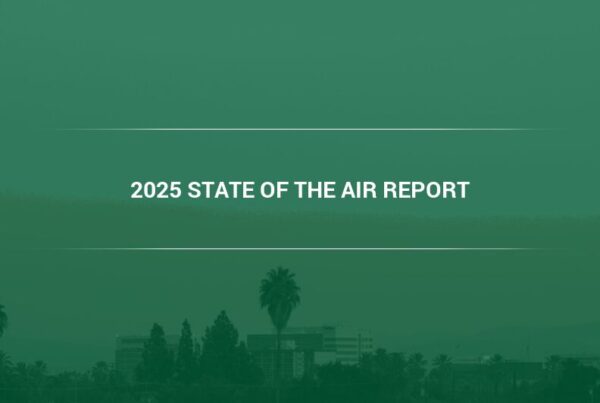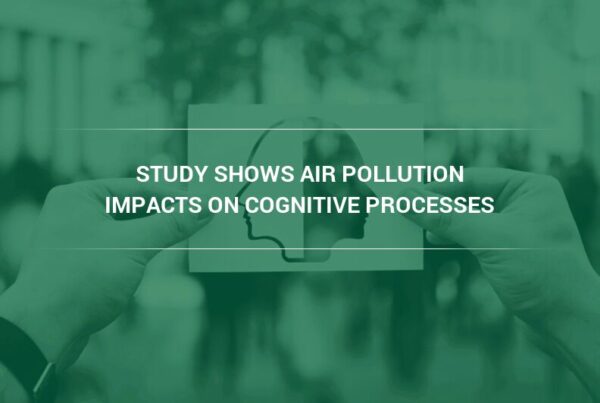Particulate matter (PM), also known as particle pollution, refers to extremely small particles of pollutants in the air. Because PM is so small, it can damage people’s bodies when inhaled. The impacts of particulate matter include damage to people’s lungs and bloodstream, as well as damage to the environment. What are the common sources of particulate matter pollution? What can be done to protect people from particle pollution?
Sources of Particulate Matter Pollution
There are many sources of particulate matter pollution, some man-made and some natural. Common sources of particulate matter are factories, cars, plants, and fires.
Because particulate matter comes from such a wide variety of sources, it can be in liquid or solid form, and it can differ in size or shape. Particulate matter is grouped into three categories: PM 10, which refers to particles 10 micrometers or smaller, PM2.5, which refers to particles 2.5 micrometers or smaller (smaller than the width of a human hair) and PM1 which refers to particles smaller than 1 micron in size.
“Because particulate matter can refer to almost any pollutant under a certain size, it is extremely varied and comes from many different sources,” says Kevin Wood, Vice President Sales & Marketing at Camfil USA. “The most common sources of manmade particulate matter are production facilities, automotive use, and even forest fires. Anything that involves combustion releases particles into the air. The dirtier the object that combusts, the higher the levels of pollutants. This means that fossil fuel using facilities like factories and power plants are heavy contributors to PM pollution.” (1)
Particulate matter can also come from a variety of natural sources such as disturbed dirt, forest fires, mold spores, and pollen.
While particle pollution is often thought of as primarily an outdoor danger, it can easily be a danger indoors as well. Due to the fact that combustion is a major source of particulate pollution, things like tobacco smoke, fireplaces, candles, and even the cooking of meat can release particulate matter indoors.
Health Impacts of Particulate Pollution
Particulate matter can be extremely dangerous to human health. The health impacts of particulate pollution include a variety of illnesses, which PM exposure can both cause and exacerbate. The smaller the particles are the more damage they can do to human health. The tiniest particles can get into the lungs and the bloodstream, and can even ride the bloodstream up from the lungs and impact the brain.
“Studies have found that exposure to particulate matter pollution can damage both the heart and the lungs,” says Wood. “The most common conditions associated with PM exposure include coughing and difficulty breathing, nonfatal heart attacks, impaired lung function, exacerbated asthma, and irregular heartbeat. Those who have pre-existing lung or heart conditions also face premature death due to the worsening of their conditions caused by PM exposure.” (2)
The people who most at risk for damage caused by PM exposure include people with current lung or heart diseases, the elderly, and children. Children are especially at risk from PM exposure due to the fact that their bodies are still developing.
Environmental Impacts Of Particulate Pollution
High levels of particulate pollution also impact the environment in addition to people’s health. Particulate matter pollution contributes to acid rain and climate change.
The environmental impacts of particulate pollution can be devastating, with poor areas of the world hit particularly hard by the environmental impact of PM pollution
In addition to the worsening of acid rain, particulate pollution can also change weather patterns, cause drought, contribute to global warming, and cause the ocean to acidify.
“Particulate matter is thought to change the weather on regional scales. An example is that it suppresses evaporation of water from the Indian Ocean leading to more lackluster Indian Monsoons, which contributes to regional drought,” adds Wood. “Aerosols and particulate pollution are believed to increase drought around the world by pushing tropical rainfall southward.” (3)
Particulate pollution also contributes to the greenhouse effect, which prevents heat from leaving the planet, leading to the melting of the polar ice caps and sea level rise. The oceans themselves acidify due to carbon dioxide particulates, which harm sea life.
Reducing Particulate Matter Pollution
Reducing particulate matter pollution is a matter of identifying and seizing the use of common polluting sources of particulate matter. Fossil fuel combustion is the primary contributor to atmospheric particle pollution, and any tasks done with fossil fuels can typically be accomplished with cleaner alternatives.
Increasing fuel efficiency and reducing emissions from vehicles is one of the best ways to reduce particulate air pollution. Diesel engines are particularly dirty and a massive source of fine particles, so it is important to replace older diesel engines with cleaner alternatives. Walking, biking, and carpooling to destinations are all important steps in reducing particulate pollution as well.
“The burning of fossil fuels at home is also a large contributor to particulate pollution, meaning that it should be reduced wherever possible,” says Wood. “Garden refuse can be mulched or composted instead of burned, fireplace use should be limited, and gas or alternate appliances should be used instead of wood stoves.” (4)
It’s critical for the health of your family, public health, and the environment that particulate matter pollution is reduced. The impacts of particulate matter can only be avoided when society works together to reduce particle pollution.
Camfil can give you more information about how to do your part to reduce particle pollution. Camfil can also provide you with filters to protect yourself and your family from the impacts of particulate matter pollution.
For more information visit https://www.Camfil.us
SOURCES
https://www.epa.gov/pm-pollution/particulate-matter-pm-basics#PM
https://www.arb.ca.gov/research/indoor/pmfactsheet.pdf
https://www.conserve-energy-future.com/causes-and-effects-of-particulate-matter.php
https://www.healthlinkbc.ca/healthlinkbc-files/outdoor-air-pollution



